Menu
Vertigrove-hydro is designed to grow the maximum number of vegetables and plants in minimum space with highest productivity consistently. Based on our 3 years of extensive research we have developed various features in Vertigrove-Hydro to address the needs and concerns of an urban farmer.
Vertigrove-Hydro is designed on a vertical structure to grow maximum plants in minimum space (up-to 48 plants in 4 sqft). But crowding plants together will adversely affect their growth and productivity as plants don’t have enough space for root growth and also the amount of nutrients that any of the plants can absorb would be less.
So, we choose to use hydroponics technology as plants can be grown very closely. Also the productivity of Hydroponically grown plants is 50% more and is consistent. Leveraging hydroponics not only ensures maximum productivity of plants in less space but will also lead to faster growth, higher yields and a more nutritious produce.
Vertigrove-hydro can be placed outside under direct sunlight. The pots are made of high-quality plastic resin that ensures all-weather durability and is 100% UV stable to prevent fading and cracking. Also, sunlight comes in patches, so Vertigrove-hydro is designed with castor wheels to make it portable. You could either move it around to ensure plants get maximum sunlight or even move it indoors in case of heavy rains.
Plant roots need oxygen to better absorb nutrients and even water. Without enough oxygen, plants are likely not to grow to their full potential, in part because they aren’t taking nutrients in effectively. In Vertigrove water is constantly falling. This falling water agitates and causes bubbles to form in the water being collected in each pot, thereby it provides aeration to the roots by increasing the dissolved oxygen levels. The height at which the water falls is optimised to ensure perfect aeration. Also, the airtube fixed in the pump will provide additional aeration to the plants. Also protection is provided to prevent heating up of the air bubbles as this is critical for growth of the plants.
The plants receive nutrients through the nutrient rich water in the water tank. The nutrients are to be added as per the chart that we provide.
Most hydroponic systems need to be plugged in 24*7. So, in cases of power failures the system would stop functioning and if the power is gone for longer durations the plants may even die. This would affect the efficiency and productivity of the system. Hence, Vertigrove has a provision wherein a certain amount of water would be collected in each pot as the water flows. This will ensure that even in case of a power cut the roots will have access to the nutrient rich water.
Most hydroponic systems let you grow only leafy vegetables. This is because in these systems, the plant roots do not have much space to grow and leafy vegetables being shallow rooted are the only ones possible. Whereas Vertigrove-hydro is designed such that the roots have sufficient space to grow as long as needed. So, it can easily support deep rooted plants such as tomatoes, okra, beans, cucumbers, etc.
Now unlike leafy vegetables, fruiting plants grow big in size and also could be creepers. To support such plants, Vertigrove-hydro is designed with creeper guards. Thereby you would not need to tie the plants or provide any external support and the system can continue to be portable.
We want Vertigrove-hydro to present to our customers a hassle-free farming experience. The major inconvenience for urban growers is cleaning their balcony or terrace after each rain or taking out time often to water each and every plant.
Vertigrove-hydro is designed to be spill proof and mosquito proof; it can be easily moved around for cleaning purposes as well. Also, because it uses hydroponics there is no question of watering each plant or even weeding. All that needs to be done is to check the nutrient level in the water (TDS Level) and pH levels once in a while.
The pots are aesthetically designed and available in different colours and are attractive hence they can be kept inside the living room or bedrooms of the house.
For busy executives who don’t have the time for this, there is an optional feature of integrating with IOT. In this, the TDS and other parameters can be checked remotely by connecting to the IOT sensors from your SmartPhone using the Vertigrove App. These sensors will read the parameters and display it on your smartphone.
Customers need to follow a standard procedure for providing the nutrients. Pest control solutions to the plants and required nutrients are easily available in the market.
Vertigrove is not just a product, but through it we wish to build a community of urban dwellers who can reconnect with nature and thereby sustainably grow their own food. For this we have a support app that lets our customers stay connected to us. The app has a provision for customers to raise a ticket in case they are facing an issue. They can simply click an image of the problem and upload it. Our team of experts would get back to them immediately with a resolution. The app would also be used as a platform to share the latest advances in urban farming with our community.

Improving customer experience is a constant process and we are always looking for new ways to enhance how our customers would farm using Vertigrove. Our aim is to enable urban dwellers who lead extremely busy lives to experience the joy of growing their own food and reconnect with nature.